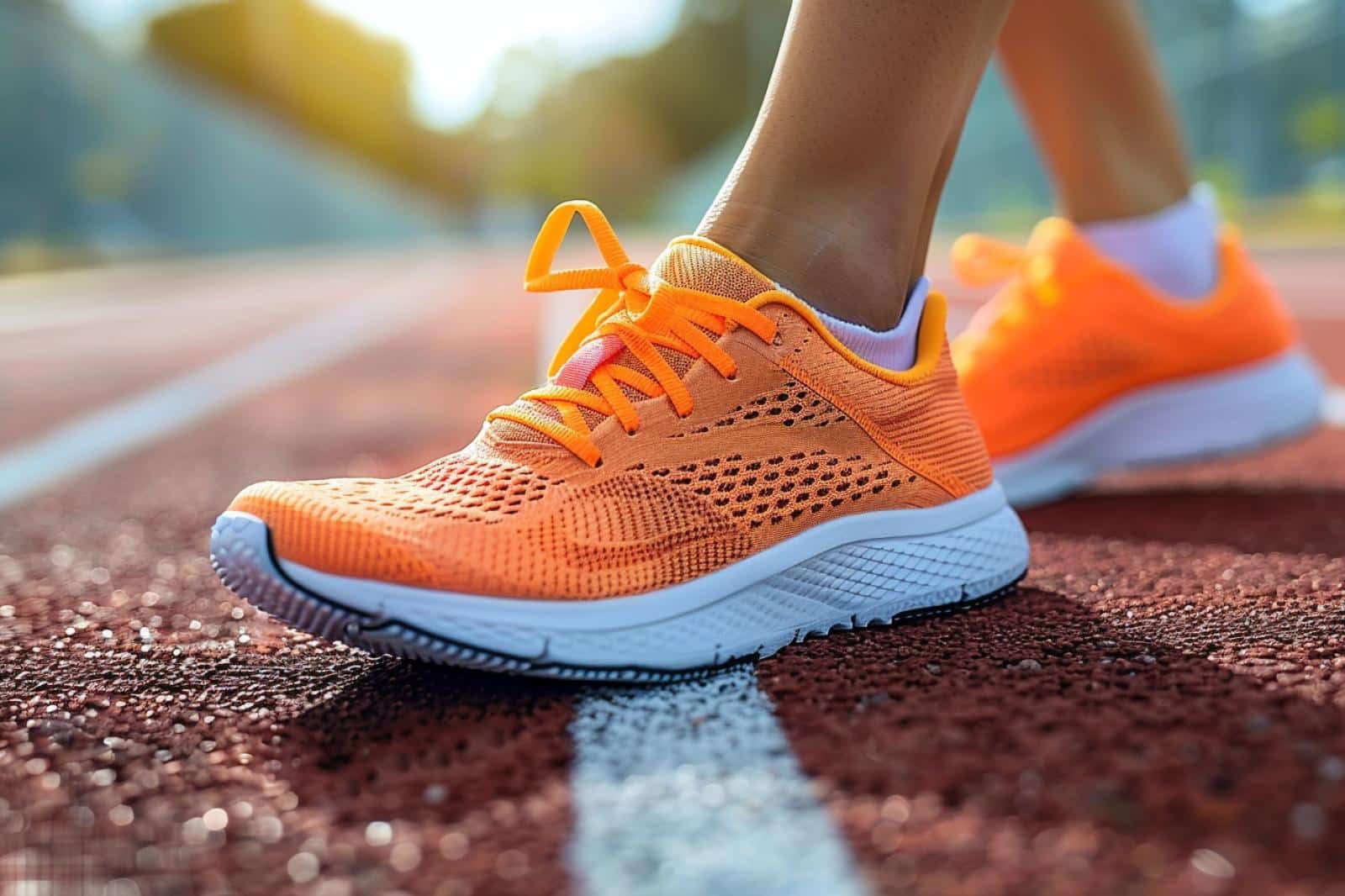How Does the Use of Ergonomic Footwear Impact the Incidence of Foot and Ankle Injuries in Runners?

Running is considered one of the most efficient and convenient ways to stay fit, helping to enhance cardiovascular health. However, it’s also a physical activity that comes with the risk of certain injuries, particularly those related to the foot and ankle. An underestimated element in this equation is footwear. Today, ergonomic footwear is emerging as a promising solution to help minimize the risk of these injuries. In this article, we delve into the intricacies of how shoes designed with ergonomics in mind can make a significant difference to runners’ feet.
Understanding the Impact of Footwear on Running
Before exploring the specific advantages of ergonomic shoes, it’s crucial to understand how footwear affects running. The shoe you lace up can significantly impact your running experience, and more importantly, the health of your feet and ankles.
Also to discover : What Are the Effects of Microdosing Natural Light Exposure on Vitamin D Levels and Mood Disorders?
Running shoes are not just about providing comfort. They play a vital role in shock absorption and stability, which are crucial for preventing injuries. Each step you take while running puts pressure on your feet, equivalent to several times your body weight. This pressure gets distributed across the foot, primarily absorbed by the heel and then by the rest of the foot. If the shoe doesn’t provide adequate cushioning and support, it can lead to injuries.
The Key Role of Shoe Design in Injury Prevention
The role of shoe design is often underestimated when it comes to injury prevention. Not all shoes are created equal, and the design can significantly impact the load distribution on your feet, thereby influencing the risk of injuries.
In parallel : How Can Interactive Digital Platforms Facilitate Peer Support for Teen Mental Health?
The key component to consider is the shoe’s sole. The sole’s height and cushioning can influence the way your foot strikes the ground and how the pressure is distributed. Shoes with a high heel-to-toe drop can potentially put more pressure on the forefoot, which may lead to injuries.
Additionally, the shoe’s design can either alleviate or contribute to peak forces that occur during running. The peak force corresponds to the maximum force exerted on the foot during each stride. A shoe that doesn’t adequately absorb these peak forces can increase the risks of foot and ankle injuries.
The Differences Between Ergonomic Footwear and Regular Shoes
Ergonomic footwear exhibits some significant differences compared to regular shoes. They are specifically designed to match the foot’s natural shape, considering the differences in foot structure among individuals.
Ergonomic shoes usually have a lower heel-to-toe drop, which encourages a mid-foot strike rather than a heel strike, reducing the pressure on the foot. They also have wider toe boxes to accommodate the natural spread of the toes during running, providing better balance and stability.
On the cushioning front, ergonomic shoes use advanced materials to provide better shock absorption, reducing the peak force experienced by the foot. This kind of footwear also pays attention to arch support, offering different levels depending on whether the runner has a high, medium, or low arch.
How Ergonomic Footwear Reduces the Incidence of Injuries
Ergonomic footwear can potentially reduce the incidence of foot and ankle injuries in runners due to their design and construction. These shoes work by aligning the foot and ankle into an optimal position, reducing the strain on different foot parts.
The lowered heel-to-toe drop in these shoes can prevent injuries associated with high impact forces on the foot, such as stress fractures. The enhanced cushioning can absorb the peak forces generated during running, reducing the strain on the foot and ankle.
Moreover, the wider toe box and the arch support can prevent common running injuries, such as plantar fasciitis and bunions. By providing space for the toes to spread naturally, the risk of developing these conditions is significantly mitigated.
Choosing the Right Ergonomic Footwear for Running
Selecting the right ergonomic footwear is not a one-size-fits-all task. It depends on several factors, such as your foot type, running style, and whether you have any specific foot conditions. Therefore, it’s recommended to try on multiple pairs to understand the differences in comfort and performance.
For runners, it’s worth investing time and effort in finding the right footwear. Running stores often have trained staff who can assess your running style and suggest appropriate shoes. They can also measure foot size accurately, which is crucial as ill-fitting shoes can lead to multiple issues.
Remember, the right shoe might not always be the most expensive or the most stylish. It should offer the right balance of comfort, support, and cushioning. Ultimately, the goal is to find footwear that can help you run longer distances without discomfort or the risk of injury.
To summarize, ergonomic footwear can play a pivotal role in preventing foot and ankle injuries in runners. By considering the natural shape and biomechanics of the foot, these shoes can provide better support and cushioning, thereby reducing the risk of injuries. Investing in a quality pair of ergonomic running shoes could be a wise decision to help you run safely and efficiently.
The Science Behind Ergonomic Footwear and Running Injuries Prevention
The science behind ergonomic footwear and its potential benefits in preventing running injuries are rooted in understanding human biomechanics and the forces exerted on the foot during running. The ground reaction force— the force exerted by the ground on a body in contact with it— is a crucial factor in this equation. When you run, the impact force is typically about 2.5 times your body weight on each stride, and this impact is first absorbed by the heel and then distributed across the foot.
Google Scholar studies suggest that ergonomic footwear can significantly reduce the plantar pressure and impact forces during running. This reduction is primarily due to the thoughtful design of these shoes, including a lower heel-to-toe drop, a wider toe box, flexible sole, and the use of advanced materials such as carbon fiber for better shock absorption.
A lower heel-to-toe drop encourages a mid-foot or forefoot strike instead of a heel strike. This adjustment in running gait can reduce the reaction force upon the initial contact with the ground, thereby reducing the risk of running-related injuries.
Additionally, the wider toe box in ergonomic running shoes allows the toes to spread naturally during running, providing better balance and stability. This natural toe spread can help minimize the risk of injuries such as bunions and plantar fasciitis.
The flexible soles of ergonomic running shoes, combined with the use of advanced materials for better shock absorption, can decrease the vertical ground reaction force and distribute it evenly across the foot, reducing the strain on any single part of the foot or lower extremity.
Conclusion: The Impact of Ergonomic Footwear on Running Injuries
The role of footwear in preventing running injuries is gaining attention, with ergonomic footwear emerging as a promising solution. The design and construction of these shoes, which takes into account the natural shape of the foot and the biomechanics of running, can have a considerable impact on the incidence of foot and ankle injuries among runners.
Ergonomic running shoes work by reducing the impact forces and plantar pressure during running by aligning the foot and ankle optimally and providing better cushioning and support. The lower heel-to-toe drop can prevent high impact forces on the foot, reducing injury risk associated with stress fractures, while the wider toe box can prevent common running injuries such as bunions and plantar fasciitis.
It’s important to remember that the choice of running shoes is not a one-size-fits-all solution. Several factors should guide your selection, such as your foot type, running style, and specific foot conditions. Therefore, trying on multiple pairs and seeking expert advice can help you find the right balance of comfort, support, and cushioning in a running shoe.
In conclusion, investing in a quality pair of ergonomic running shoes can be a wise decision for runners who want to reduce their risk of foot and ankle injuries. This type of footwear may not only help you run longer distances but also do so comfortably and safely.
